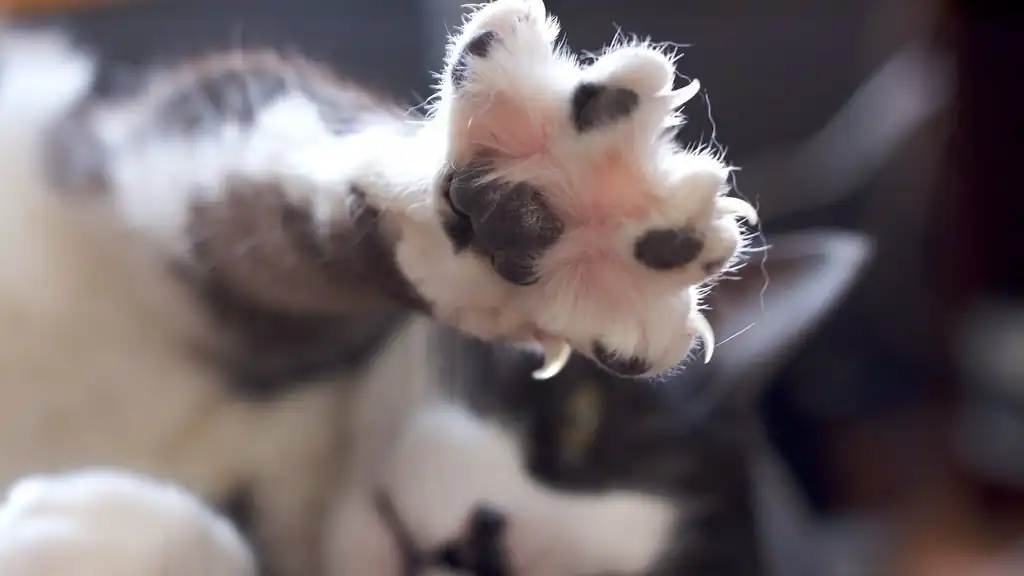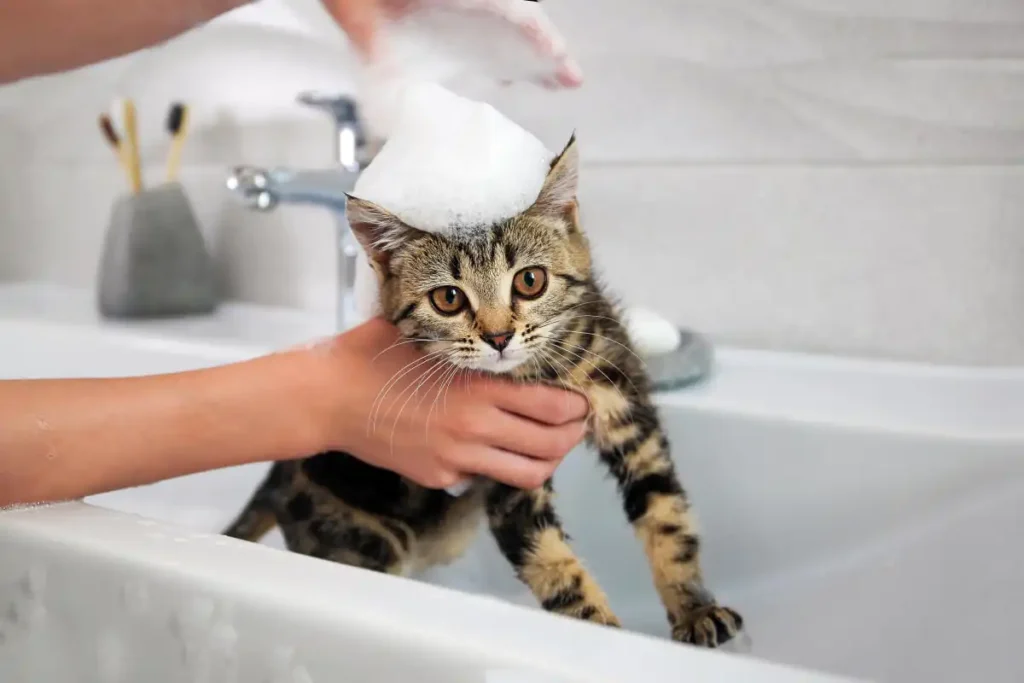Kittens need some help with smooth grooming and paw and mouth hygiene. Gently and patiently caring for your kitten like this will help you build a strong bond with your cat and ensure that she is healthy both physically and mentally.
Kittens spend most of their waking hours grooming, but it’s important for you, the owner, to take responsibility for your kitten’s grooming and hygiene, and to be there to help. Caring for your kitten in this way will not only keep your cat healthy, but it will also build a close relationship.
Helping your kitten with grooming

Grooming your kitten on a regular basis and checking for parasites such as fleas and lice will help prevent hairballs from accumulating in the stomach.
How to groom a kitten
🐱 Begin by brushing very gently to get your cat used to being brushed.
🐱 Always brush in the downward direction, then in the reverse direction, and gently remove any shedding or small knots.
🐱 If there are knots in the hair, please detangle them gently and patiently, and do not pull or break the hair.
🐱 We recommend that you play a game with your kitten at the end of the grooming session to make it fun for the kitten.
🐱 Spring and summer are coat changing seasons and require more regular and careful grooming. Use a rubber massage glove first, then switch to a comb to make it easier to remove the hair.
How to groom a short-haired cat
For Shorthaired cats, weekly grooming is sufficient. Before grooming, you can massage your cat’s fur in the opposite direction with a grooming glove to remove shedding hair and tidy up the skin. Whenever possible, use a soft brush with natural silk bristles to avoid damaging the fur.
How to groom medium and long-haired cats and Persians
Brush for a few minutes every day to avoid tangles and remove dirt. A metal comb with wide spacing is best. Be careful with combs as they reach deeper into the fur than brushes, which means they are likely to irritate the skin, so take the time to choose the right comb.
How to Trim Your Kitten’s Claws

Kittens mark their territory with their claws. To avoid scratching and injury, it’s best to trim their claws without interfering with their natural behavior. Claw trimming is completely painless, but can be stressful for kittens, so it’s important to start as early as possible to get your cat accustomed to the process from an early age.
🐈 Ask your veterinarian: Before you start trimming your cat’s claws, ask your veterinarian to explain how far you can go without causing pain or bleeding.
🐈 Make sure you and your cat are comfortable: Choose a comfortable place to sit and place your kitten on your lap, gently clasping your thighs around her body. Once you’ve clipped one claw, rub your kitten’s tummy to comfort her before trimming the next claw.
🐈 Gaffer’s scissors are the best tool for claw trimming: cut the white tip of the claw without touching the end of the pink triangle, which is the flesh at the base of the claw (the meat under the nail). If you cut too close to the flesh under the nail, your kitten may become nervous and bleed.
🐈 Take your time: It’s best to do this over several sessions, a little at a time, rather than a large piece at a time.
Your kitten’s claws are a good indicator of health. Paws that are too hard or too soft can be a sign of malnutrition or a bacterial infection, so consult your veterinarian if you notice this.
How to clean your kitten’s face
🐱 Cleaning your kitten’s eyes: Some cats (such as those with flat faces) tear, which can leave tear marks under the eyes. You can clean the fur by using a medicated compress with eye drops and rubbing from the inside of the eyelid outward.
🐱 Clean your kitten’s nose: A healthy kitten’s nose should be moist and clean at all times. Some kittens may have nasal discharge from the corners of their nostrils, which can be wiped away with a compress or tissue and warm water.
🐱 Clean your kitten’s ears: Your kitten’s ears should be checked regularly. If the ears are dirty, simply apply a small amount of earwax and massage the outer ear.
If you notice any discharge or excretion, ask your veterinarian to diagnose the problem and recommend appropriate treatment.
Take care of your kitten’s oral hygiene
Your kitten’s milk teeth will begin to appear between 2 and 6 weeks of age. It’s important to keep your kitten’s mouth hygienic, as poor hygiene can lead to tooth loss, gum inflammation and bad breath.
🐱 Brushing your kitten’s teeth: A customized cat toothbrush and veterinary toothpaste are recommended. To get your kitten used to having its teeth brushed, start the habit at a young age and keep it there – your kitten will soon get used to it.
🐱 Avoid tartar buildup: Help control tartar by choosing a dry food that has a special texture and contains calcium-absorbing substances in the saliva to control tartar buildup.
If you have any questions about the condition of your kitten’s teeth, talk to your veterinarian, who will be able to offer advice and remove tartar using an ultrasonic machine.
How to bathe a kitten

Cats are not very interested in water, but bathing is an important part of grooming and hygiene for medium and long-haired cats, so it’s a good idea to familiarize your kitten with bathing as soon as possible.
When bathing, it is important to use cat shampoo, which has a pH level suitable for cat skin and fur (do not use human shampoo, as it may contain ingredients that are toxic to kittens).
1. Familiarize your cat with the water, gently but firmly.
2. Wet the body with a sponge at first. If the kitten becomes hostile, stop and try again in a few days until it accepts the water.
3. Gently wash the fur, especially the dirty parts.
4. Fill the bathtub with water at 36 to 37°C and gently place the kitten in it.
5. Reassure your kitten with soft words and strokes.
6. Gently splash water on your cat’s back and scrub with a little shampoo, being careful to avoid the eyes and ears.
7. Wrap your kitten in a clean, warm towel. You can use a hairdryer to dry the fur completely, but be sure to keep the air speed low and the temperature of the airflow not too high and not too close.
Grooming your kitten is a great way to bond with your new pet and take care of their physical and emotional well-being. It also allows you to familiarize yourself with your kitten’s skin, eyes, ears, teeth and fur, which can help you identify any abnormalities. If you do notice any sudden changes or abnormalities, please consult your veterinarian for professional advice and treatment.
